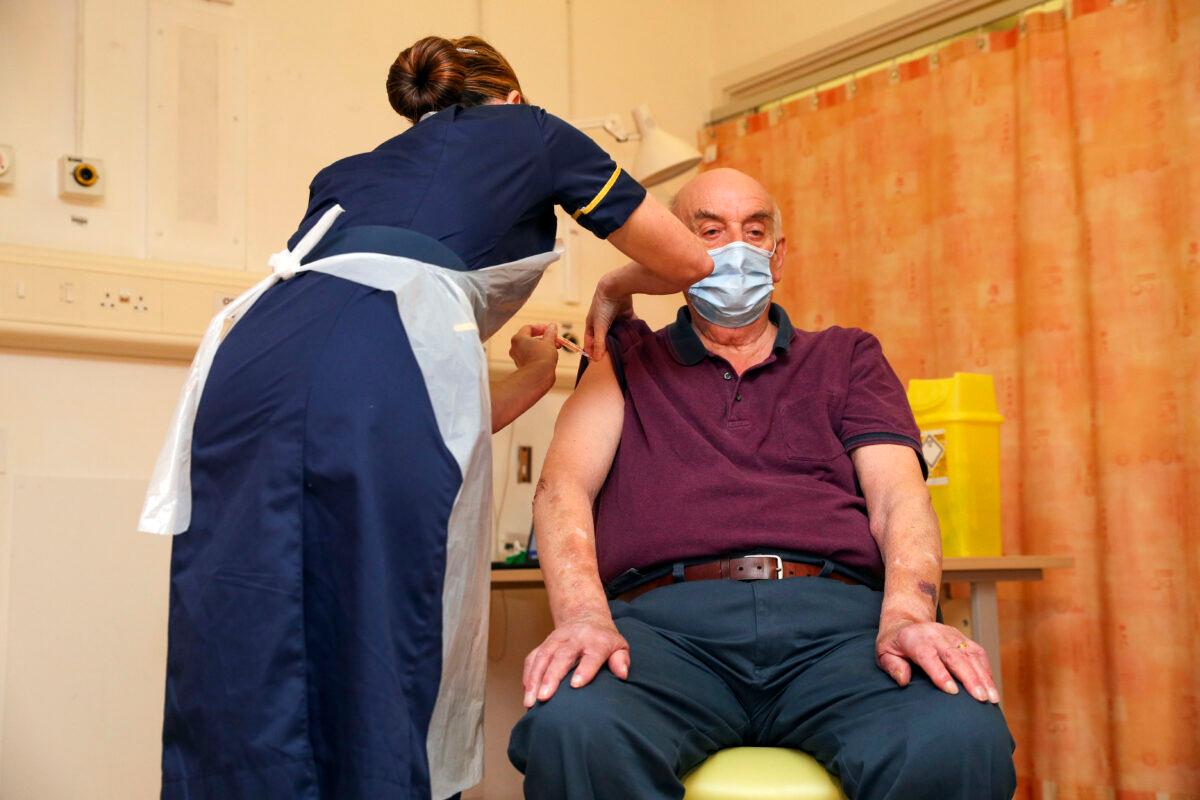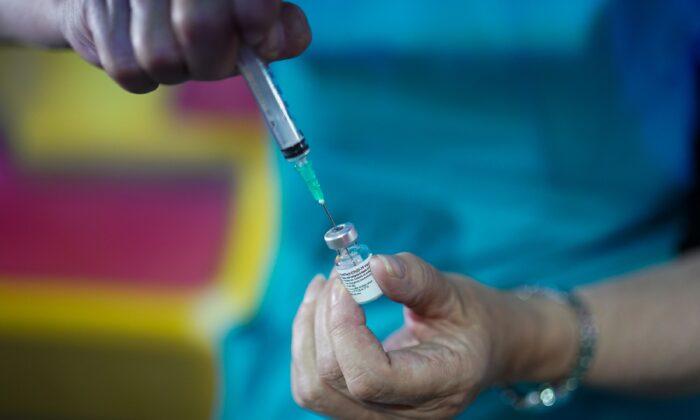People under the age of 65 will no longer be offered COVID-19 vaccines unless they are otherwise eligible, the UK government said on Aug. 8.
The announcement came after the official advisory body, the Joint Committee on Vaccination and Immunisation (JCVI), said boosting under-65s is unlikely to be cost-effective.
It’s the first time that the JCVI has taken cost effectiveness into account in its advice for COVID-19 vaccine deployment.
In February, the Department of Health and Social Care (DHSC) dropped under-50s from its aged-based universal vaccination programme following the JCVI’s interim advice that the uptake rate in this age group had dropped to below 0.1 percent per week.
According to an analysis published by the DHSC on data from last winter, the UK Health Security Agency (UKHSA) estimated that for people aged between 60 to 64 who have no risk factors, 27,100 shots will be needed to prevent one hospitalisation, about 45 times the amount it said is needed among the immunocompromised and 10 times the amount needed for other at-risk groups in the same age group.
Some 344,100 shots will be needed to prevent one serious hospitalisation, and 302,600 shots are needed to prevent one death among healthy 60- to 64-year-olds, according to the analysis.
For healthy 50- to 54-year-olds, an estimated 33,900 doses can prevent one COVID-19 hospitalisation, a half-million doses can prevent one serious hospitalisation, and 700,000 doses can prevent one death, the document said.
Vaccine Effectiveness
The UKHSA also gave estimates of vaccine effectiveness based on data from the spring booster campaign last year.The effectiveness of the new booster against hospitalisation may be 40 percent at the end of first month, 50 percent by the second month, before falling back to 20 percent by the fifth month, UKHSA said.

The DHSC, which began its latest autumn booster campaign on Aug. 8, said primary and booster shots will be offered to everyone aged 65 and over, residents and staff in older adult care homes, front line health and social care workers, people 6 months and over in a clinical risk group, people 12 and over who live with an immunosuppressed person, and unpaid carers who are 16 and over.
“The autumn booster programme will continue to focus on those at greatest risk of getting seriously ill,” said professor Wei Shen Lim, chair of COVID-19 immunisation for the JCVI. “These persons will benefit the most from a booster vaccination.”
Mr. Lim said it’s “important” for those who are eligible to be boosted before winter to prevent hospitalisations and deaths.
For those who are unvaccinated and wish to start now, the primary course will consist of one shot of any COVID-19 vaccine instead of two shots.
Yellow Card
According to the Medicines and Healthcare products Regulatory Agency’s self-reporting Yellow Card website, to date, nearly half a million reports of suspected adverse reactions (ADR) have been made on COVID-19 vaccines, including 358,759 serious suspected ADR reports and 2,564 fatal ADR reports.Reports on the Yellow Card system don’t prove links between ADRs and COVID-19 vaccines.
The figures show 87 percent of the claims were rejected because the independent medical assessor judged the vaccines were unlikely to have been the cause of their conditions.
Some 127 claimants were granted a VDPS payment, which is a lump sum of £120,000, and another 146 claims were rejected because they didn’t meet the 60 percent threshold.
A separate Freedom of Information release showed that between 2018 and 2022, fewer than five claimants received VDPS payments each year.





